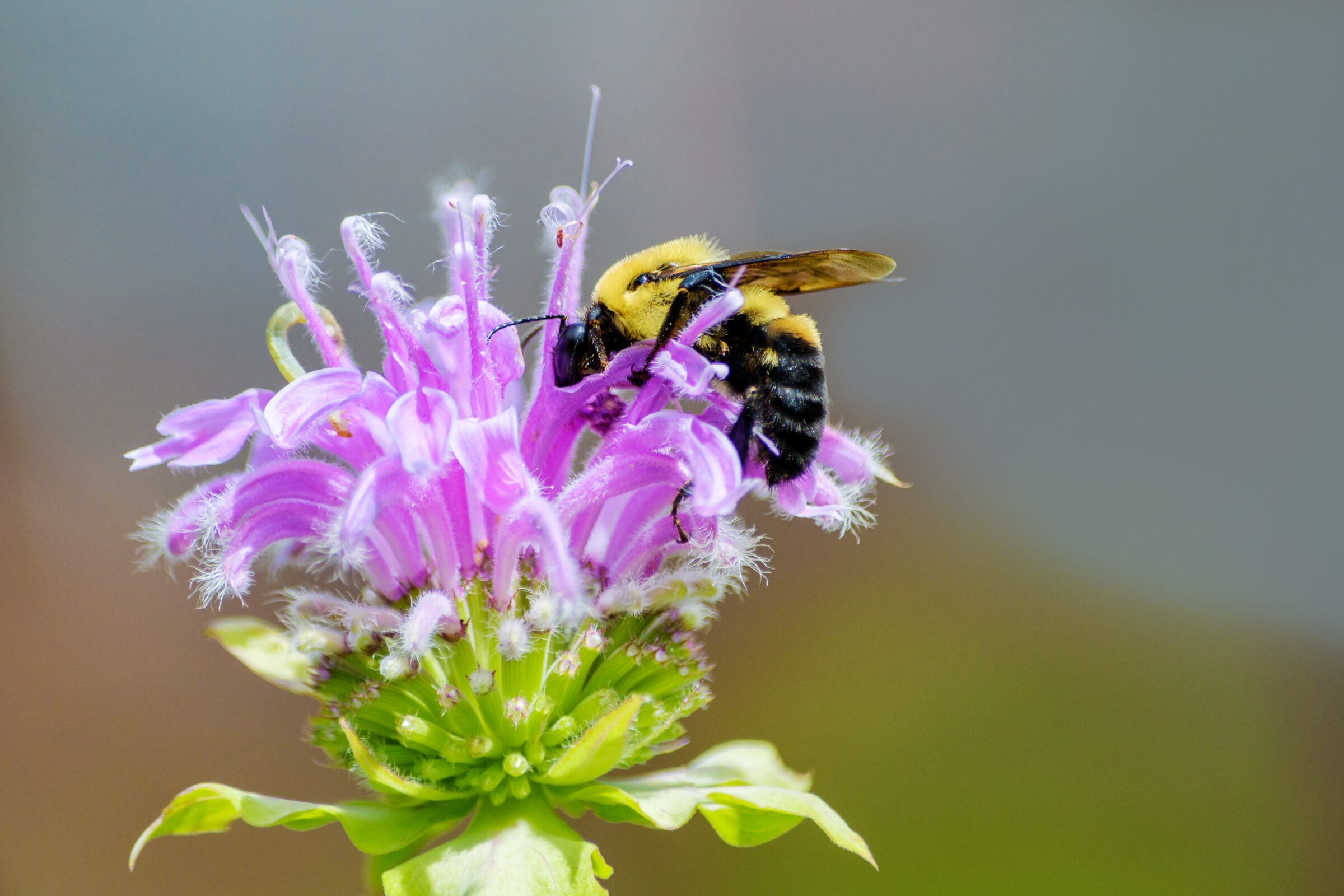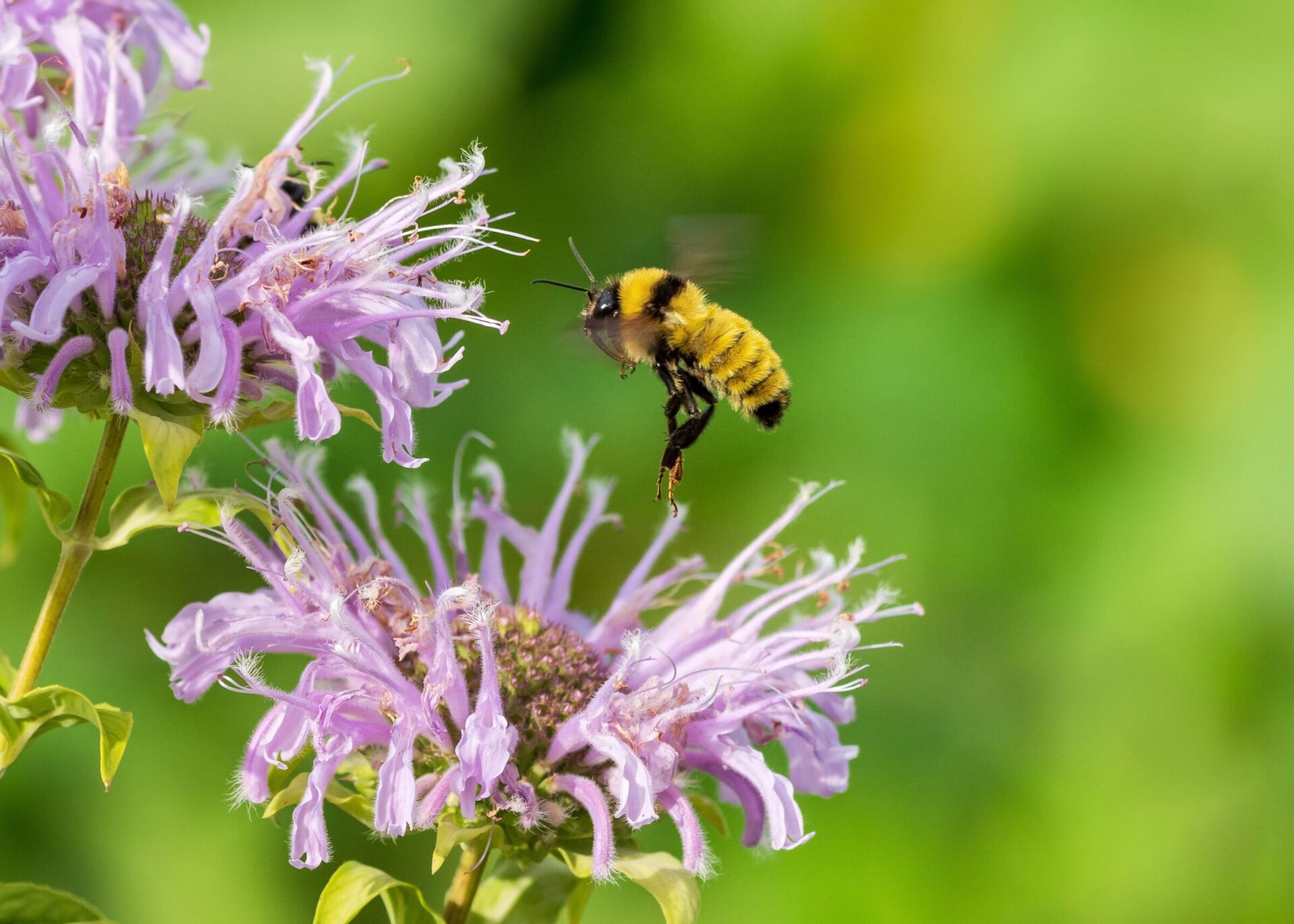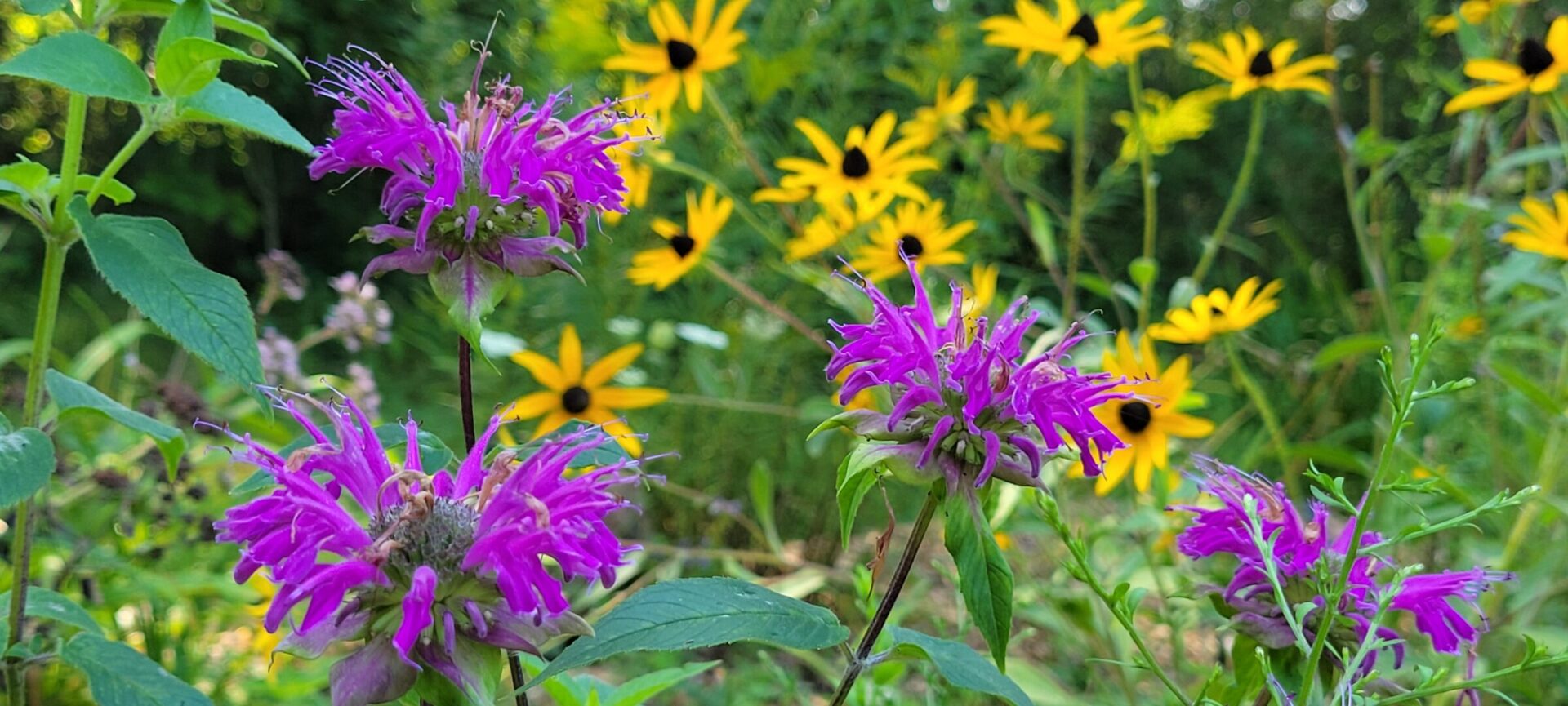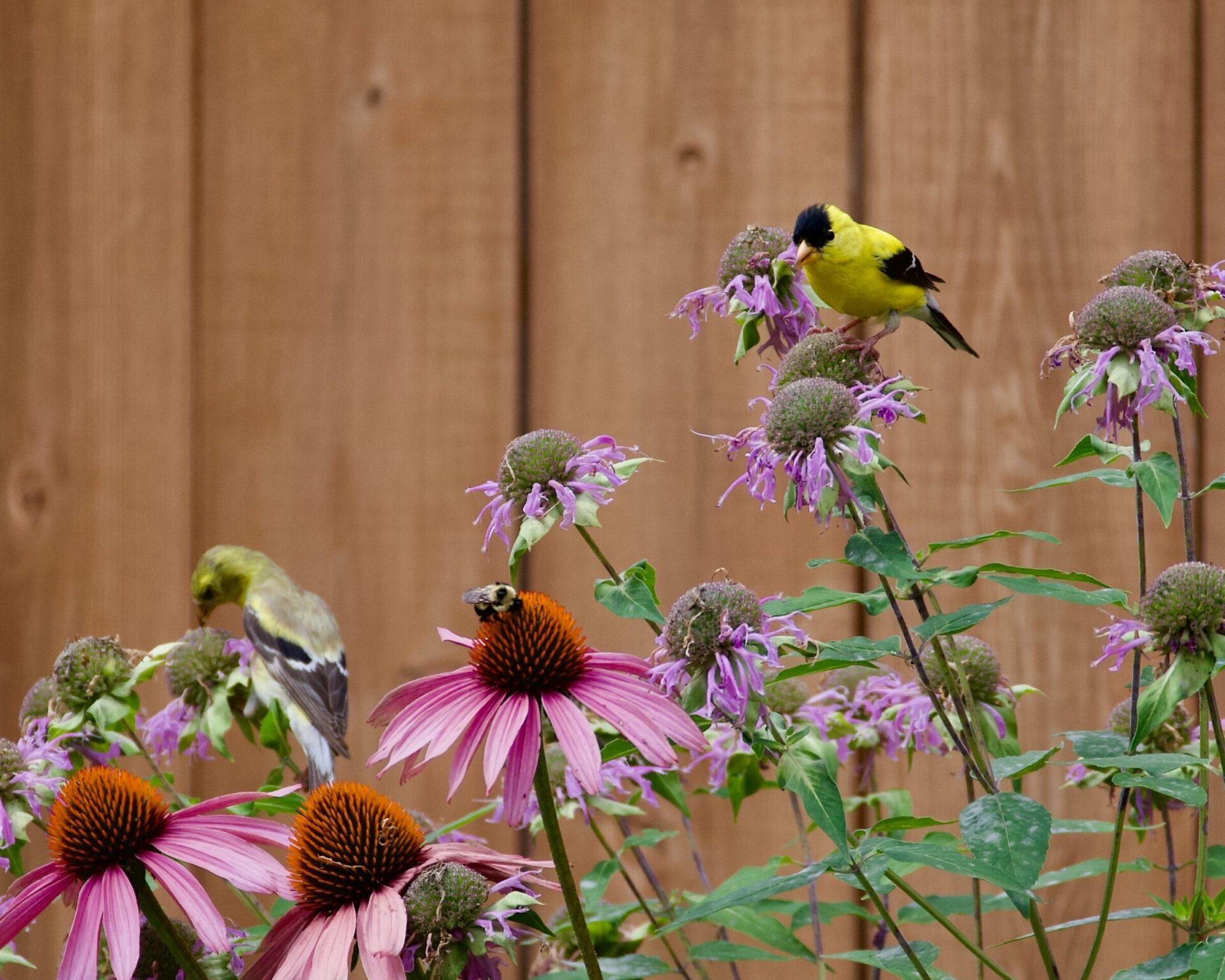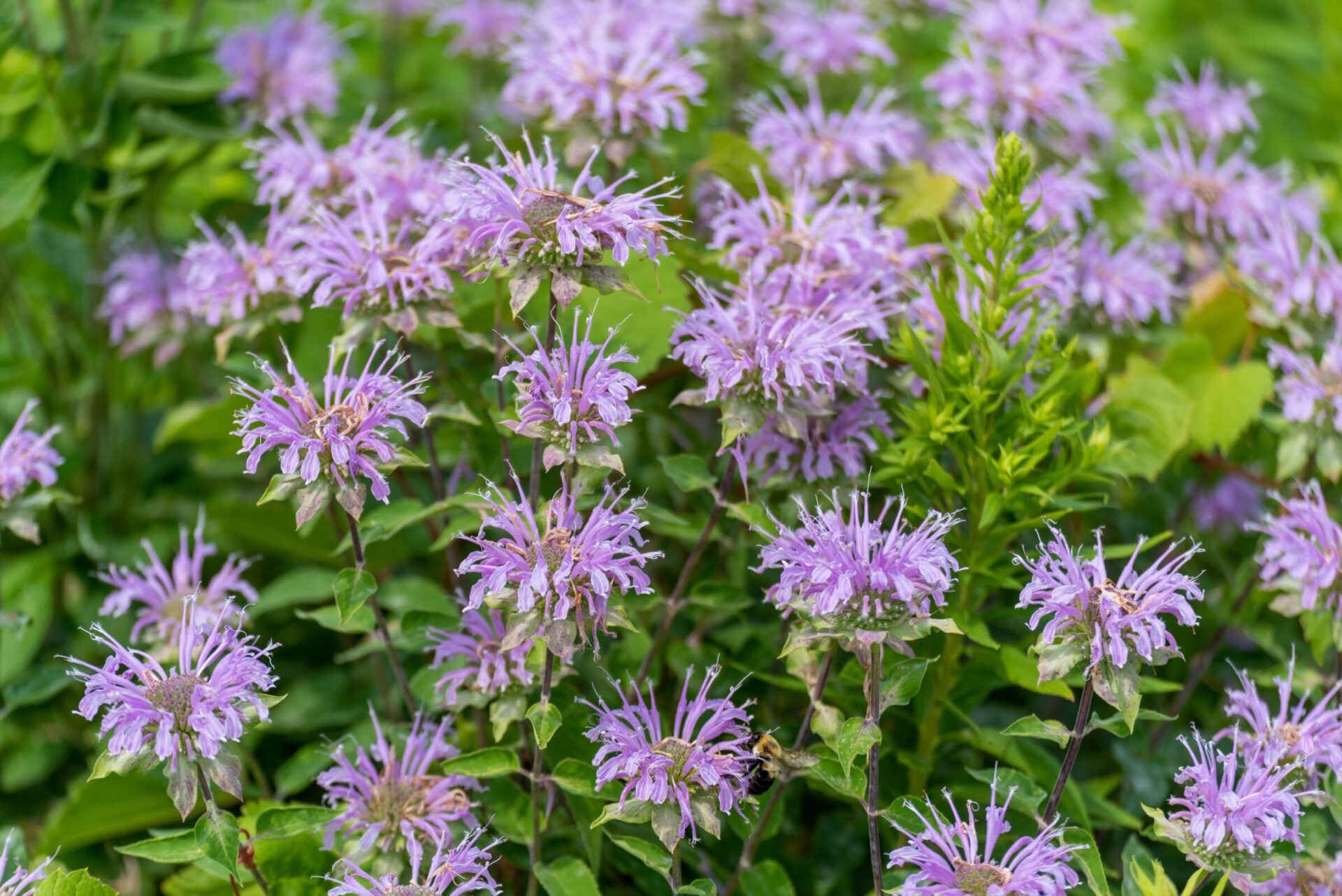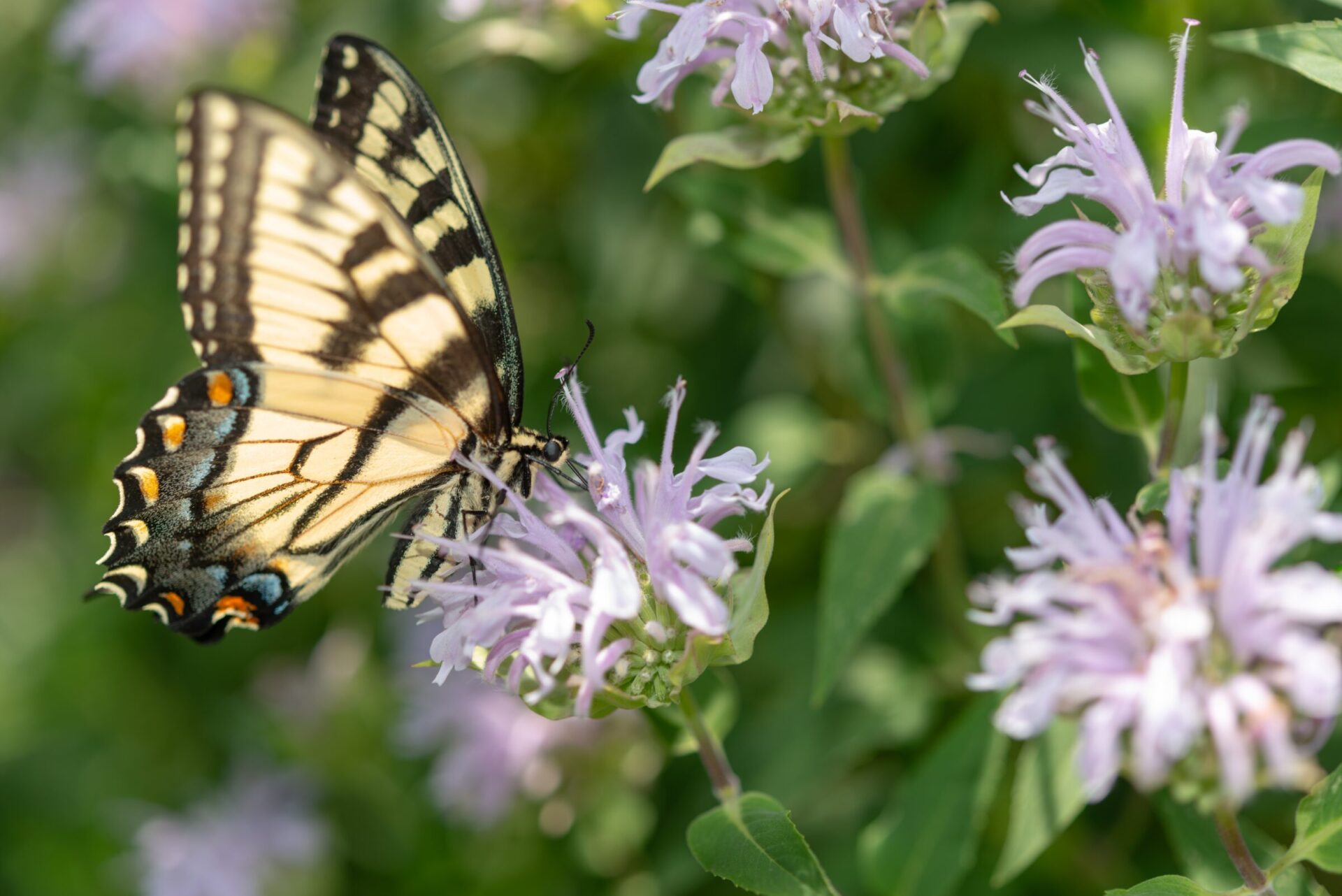Bee balm is also native to North America, which means it’s well-suited to local climates and easy to care for. Plus, its aromatic foliage is a natural pest deterrent, adding an extra layer of value to this already impressive plant.
Light Needs
Bee balm thrives in full sun but can tolerate partial shade. Aim for at least 6 hours of sunlight a day for the best blooms.
Soil Needs
This adaptable plant prefers rich, moist, and well-draining soil. Adding compost or organic matter can help keep your bee balm happy.
Size
Bee balm can grow anywhere from 2 to 4 feet tall and spread about 2 feet wide, making it a great middle or back border plant in your garden.
Spacing
Give your bee balm plants about 18-24 inches of space to allow for good airflow. This helps prevent mildew, which bee balm can sometimes be prone to.
Zone
Bee balm is hardy in USDA zones 3-9, thriving in a wide range of climates. It’s a dependable choice for many gardeners across North America.
Nectar Quality
Bee balm’s flowers are rich in nectar, attracting bees, butterflies, and hummingbirds throughout the summer. It’s a must-have for any pollinator garden.
